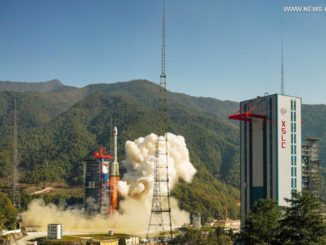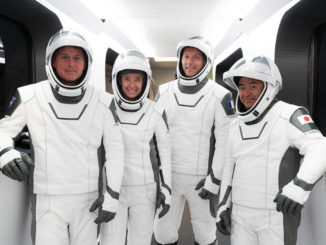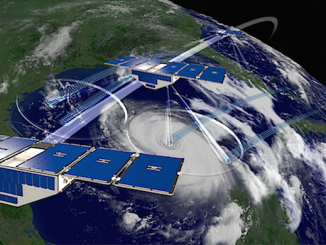EDITOR’S NOTE: Updated at 6 p.m. EDT (2200 GMT).

NASA and Northrop Grumman officials decided Friday to return a Pegasus rocket and its carrier aircraft from Hawaii to California, aborting a trip to Kwajalein Atoll in the Pacific Ocean for next week’s scheduled launch of a NASA research satellite to conduct additional testing.
The return trip to California will postpone the launch of NASA’s Ionospheric Connection Explorer, known as ICON, indefinitely. Launch was scheduled for next Thursday, June 14, U.S. time.
“Northrop Grumman, working with NASA, has made the decision to postpone the June 14 launch of the Pegasus XL rocket, carrying the ICON spacecraft,” the company said in a statement. “The company will return Pegasus to Vandenberg Air Force Base to conduct testing of the rocket after off-nominal data was seen during the ferry flight.
“Upon further review of the data, the teams will work to determine a new launch date,” the statement said. “As always, Northrop Grumman works with NASA to base its launch decisions on assuring mission success for our customer.”
The U.S. Army’s Reagan Test Site, which manages the launch range at Kwajalein, has limited windows available for civilian launchers like the Pegasus. The Pegasus rocket’s return to California is expected to cause the mission to miss its narrow launch opportunity in June, prompting a delay that could be measured in months.
The air-launched Pegasus XL rocket, nestled under the belly of an L-1011 carrier jet, departed Vandenberg Air Force Base, California, on Wednesday, heading for an overnight stop at Hickam Air Force Base, Hawaii, en route to Kwajalein Atoll, home to a U.S. military launch range in the mid-Pacific Ocean.
But teams reversed course after detecting a technical problem on the first leg of the journey. The nature of the “off-nominal data” found during the ferry flight was not announced as of Friday afternoon, and a NASA spokesperson did not provide further information when asked.
The L-1011 aircraft, along with a team of controllers, technicians and engineers making the trip on a charter airplane, did not take off for Kwajalein as planned Thursday, and officials decided Friday to bring the rocket back to Vandenberg Air Force Base, where Pegasus launchers are assembled and readied for missions.
The online flight tracking website FlightAware.com showed the charter plane with members of the ICON team took off from Honolulu on Friday bound for Vandenberg. A flight plan for the L-1011 aircraft, carrying the Pegasus rocket, showed it was scheduled to leave Hawaii later Friday.
The ICON satellite is fastened to the forward end of the 55-foot-long (17-meter) Pegasus rocket. ICON will probe the link between Earth’s atmosphere and space weather.
ICON is about the size of a refrigerator and weighs a little more than 600 pounds for launch. The $252 million project is NASA’s first mission dedicated to studying the influence of Earth’s weather on the ionosphere, an ever-changing layer in the upper atmosphere that affects long-distance communications and navigation.
The mission was set to be the first satellite launch conducted by Northrop Grumman after the aerospace contractor’s purchase of Orbital ATK, which developed the Pegasus rocket. Orbital ATK has conducted 43 satellite launches with Pegasus rockets since 1990, and a record which includes 29 successful orbital-class missions in a row since 1997.

ICON will be the fifth Pegasus mission staged from Kwajalein, a site which NASA and Northrop Grumman officials — then part of Orbital ATK — selected based on ICON’s target orbit and the rocket’s lift capability, which gets an extra boost from the island’s equatorial location.
The Pegasus team had pre-staged key equipment, including launch control consoles and spares for the Pegasus rocket and the L-1011 carrier aircraft, at Kwajalein months before the mission’s scheduled takeoff.
Located in the Marshall Islands, Kwajalein is around 2,400 miles (3,900 kilometers) southwest of Honolulu, just west of the International Date Line.
ICON’s launch has been delayed a year by a pair of concerns with its Pegasus launcher.
Engineers wanted more time to inspect the Pegasus rocket motors after they were mishandled during shipment to Vandenberg, officials said. That pushed the launch back from June to December 2017, the next availability in the military-run range at Kwajalein.
Then managers decided to ground the mission to assess the reliability of bolt-cutters used to jettison the Pegasus rocket’s payload fairing and separate the satellite in orbit. Workers installed smaller bolts in the fairing and satellite separation mechanisms, a measure officials said will ensure the cutters do their jobs.
Email the author.
Follow Stephen Clark on Twitter: @StephenClark1.



